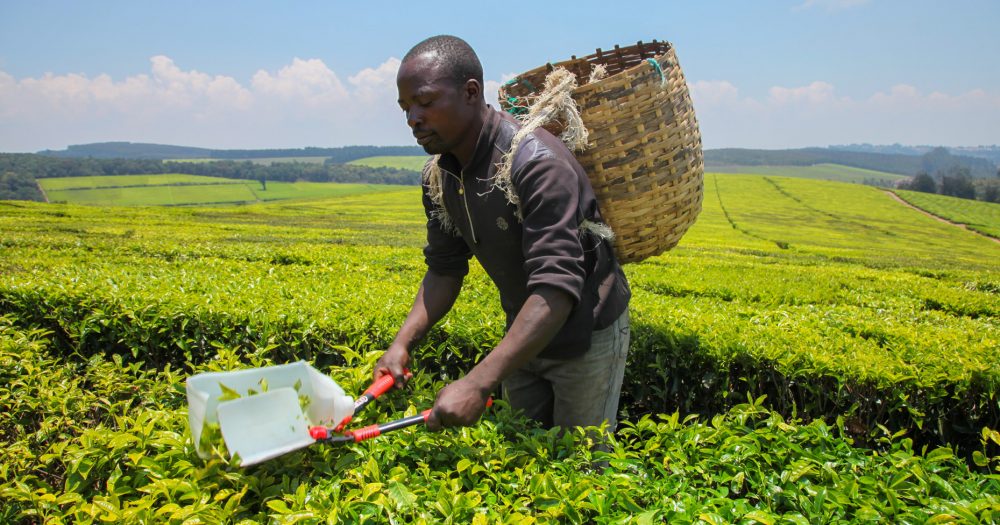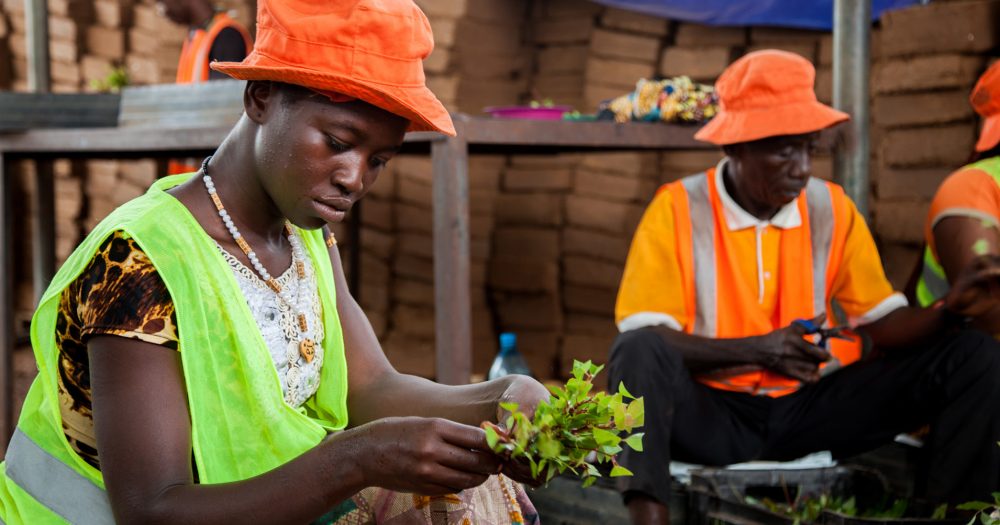Our investment
Description of the investment.
Description of the investment.
The loan will support TDB in addressing the short-term financing needs of its clients during a challenging time given the context of COVID-19. Our funding will support private sector corporates in countries with challenging investment climates with working capital and will benefit the import and export of agricultural products and essential commodities as economies emerge from the COVID-19 crisis.
Impact information
Applies to investments made from 2019 onwards. The tabs in this section define what we expect to achieve through the investment, assessing the potential impact of the investment against six dimensions of impact. You can find more details on our methodology of assessing impact here.
Applies to investments made from 2019 onwards. The tabs in this section define what we expect to achieve through the investment, assessing the potential impact of the investment against six dimensions of impact. You can find more details on our methodology of assessing impact here.
What?
| Impact |
|---|
Sustained and potentially improved economic opportunities (SDG 8.1, 8.5). |
|
|
How?
| How? |
|---|
|
Economic enabler: This facility will allow the Trade Development Bank (TDB) to provide short-term (less than two years) trade finance products (e.g. pre-/post-shipment loans, import finance facilities) to corporates in Africa. The corporates will mostly be existing private sector clients requiring renewal or top-up loans, but may expand to new borrowers as economies emerge from the COVID-19 crisis. Increased credit will enable corporates to continue to import/export strategic inputs, agricultural or commodity goods. This will sustain and potentially increase business operations. |
Who?
| Stakeholder | Geography | Characteristics |
|---|---|---|
| Employees, suppliers, customers |
Pan-Africa; 99 per cent exposure to category ‘A’ and ‘B’ countries in the trade finance portfolio. |
Given diversity of sectors, employee/suppliers will be low and high-skilled. Key sectors include infrastructure, energy, agribusiness and banking; The characteristics of corporates reached are assumed to be large as TDB extends direct ticket lines to these businesses ($10 – 50 million). |
How much?
| Scale | Depth/Duration |
|---|---|
|
The trade finance portfolio is expected to grow by approximately 15 per cent year-on-year. Based on an illustrative pipeline, CDC’s loan is expected to support four to six facilities depending on the tenor of the underlying loan. (Projections have been adjusted to reflect the COVID-19 market context.) |
|
Contribution/additionality
| Contribution/additionality |
|---|
|
Risk
Alignment Risk
Alignment Risk
Evidence Risk
|
Impact score
|
Impact score (at point of investment)
The Impact Score is a tool to help us manage our performance against our strategic impact objectives. It is designed to incentivise investments that support our productive, sustainable, and inclusive objectives. You can find out more here. The Impact Score is published for investments made from 2022 onwards. The Impact Scores are calculated at the point of investment. We publish the Impact Scores of new investments annually, once the information has been externally assured by an independent third party. |
|---|
7 |
Environmental and social information
-
Environmental and social summary
A high-level description of the environmental and social aspects of the investment. This may include a summary of key environmental and social risks identified during environmental and social due diligence (ESDD); key elements of an environmental and social action plan (ESAP); or ways in which we plan to support the investee improve environmental and social standards, such as through their environmental and social management system (ESMS); as well as any other priority areas agreed with the investee.
-
Environmental and social risk
A risk category rating, which indicates the level of environmental and social risk associated with an investment. For an explanation of the categorisations used, see here. We consistently provide an environmental and social risk category for all investments screened from 2023 onwards.
Environmental and social summary
We agreed on an ESAP with TDB focused on enhancing the Bank’s E&S Management System (ESMS) and its implementation. TDB will also update its HR policies and procedures to align with BII's safeguarding requirements.
Environmental and social risk
Medium-High
Reporting and Complaints Mechanism
The Reporting and Complaints Mechanism allows anyone outside BII to report alleged breaches of the business integrity or environmental and social provisions of BII’s Policy on Responsible Investing. This includes breaches made by BII, a BII investee, or a portfolio company of a fund in which BII has invested. The Reporting and Complaints Mechanism Rules are available here. Reports and complaints can be submitted by email to reportsandcomplaints@bii.co.uk or by mail. See more details on our Reporting and Complaints Mechanism here.
For any other general enquiries contact us at enquiries@bii.co.uk
-
Key facts
- First published
:
When the investment was first published on the website database.
- March 2024
- Last updated
:
When the last quarterly update of the website database occurred.
- March 2025
- Project number
:
An identifier number shared by investments in the same project.
- D5801
- Status
:
The current status of the investment (green flag for active and red flag for exited).
- Active
- Region
:
The geographical region where the country is located. We currently invest in Africa, South Asia, South East Asia and the Caribbean. In 2023, BII’s investment mandate was extended allowing it to invest in regional funds linked to Ukraine, with the majority of activity expected to begin post-war. Investments outside these regions were made prior to 2012 under previous investment mandates.
- Central Africa, East Africa, North Africa, Southern Africa
- Country
:
The countries where the investment delivers impact. Where impact is delivered in multiple countries, this is indicated.
- Burundi, Malawi, Mozambique, Tanzania, Zambia, Zimbabwe
- Sector
:
We prioritise those sectors that facilitate development and need our capital the most. Our priority sectors contribute towards many of the Sustainable Development Goals. They range from investing in the power infrastructure that will provide people with better access to electricity, to investing in financial institutions that direct capital to the individuals and businesses that need it the most.
- Financial services
- Sub sector
:
The sub-sector that the investment is made into; this provides a more granular level of detail than the ‘sector’ information
- Consumer Finance
- Investment type :
- Debt
- Start date :
- December 2023
- Amount :
- $100m
- Currency of investment :
- USD
- Domicile
:
The company or investment fund’s place of incorporation.
- Mauritius
We provide capital in the following ways: directly – through direct equity, direct debt, guarantees and other non-intermediated financial instruments; and indirectly – principally through investment funds.
For direct investments and fund investments, this is the date BII committed capital to the investments. This is typically the date on which legal agreements are signed by all parties.
For the portfolio companies of our fund investments, this is the date (either the month or the quarter) on which the fund committed capital to the portfolio company.
For direct equity investments, this is the date at which British International Investment exited the investment.
For debt investments, this is the date at which the final debt repayment was made.
For funds, this is the date at which the fund was terminated.
For underlying fund investments, this is the date at which the fund manager exited the investment.
The total amount committed, per financial instrument, per investment, on the date BII becomes subject to a binding legal obligation to provide funding or assume a contingent liability. This information is provided in US dollars.
For direct investments, this is the amount that BII has committed to the business or project. For fund investments, this is the amount BII has committed to the fund.
The currency in which the investment was made.
- 2X Gender Finance
:
Indicates whether the investment is ‘2X qualified’ using the 2X Challenge criteria. You can find out more here. It only applies to investments made from 2018 onwards, when the 2X Challenge was first launched.
- Partially qualified
- First published
Related investments made by BII into this company:
| Investment name | Commitment | Region | Sector | Start date | Status |
|---|---|---|---|---|---|
| Investment 01 | $50m | Central Africa, East Africa, North Africa, Southern Africa | Financial services | June 2016 | Exited |
| Investment 02 | $50m | Central Africa, East Africa, North Africa, Southern AfricaCentral Africa, East Africa, North Africa, Southern Africa | Financial services | May 2018 | Active |
| Investment 03 | $75m | Central Africa, East Africa, North Africa, Southern AfricaCentral Africa, East Africa, North Africa, Southern AfricaCentral Africa, East Africa, North Africa, Southern Africa | Financial services | December 2019 | Active |
| Investment 04 | $100m | Central Africa, East Africa, North Africa, Southern AfricaCentral Africa, East Africa, North Africa, Southern AfricaCentral Africa, East Africa, North Africa, Southern AfricaCentral Africa, East Africa, North Africa, Southern Africa | Financial services | December 2020 | Exited |
| Investment 05 | $-25m | Central Africa, East Africa, North Africa, Southern AfricaCentral Africa, East Africa, North Africa, Southern AfricaCentral Africa, East Africa, North Africa, Southern AfricaCentral Africa, East Africa, North Africa, Southern AfricaCentral Africa, East Africa, North Africa, Southern Africa | Financial services | May 2023 | Active |


